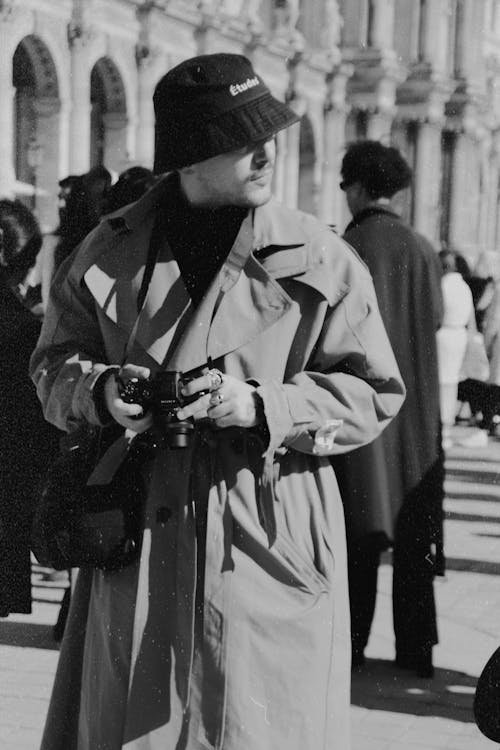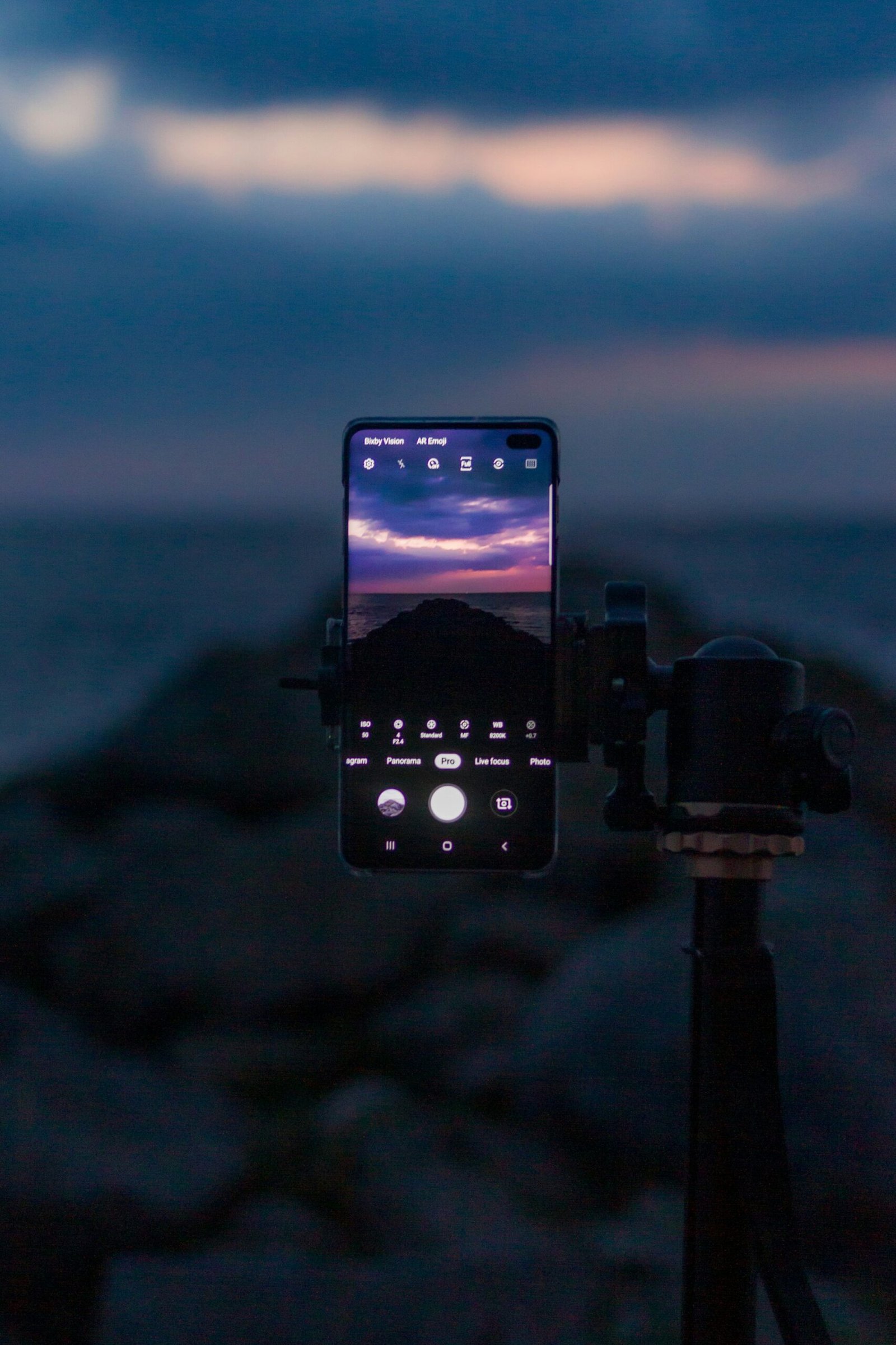Don't miss our holiday offer - 20% OFF!
The Ultimate Guide to Black and White Photography

Black and white photography occupies a unique space in the artistic world, bridging centuries of photographic history with contemporary expression. The journey of monochromatic photography began in the early 19th century when pioneers like Louis Daguerre and Henry Fox Talbot developed techniques that harnessed the interplay of light and shadow. Over time, this genre evolved, captivating photographers who saw the potential in its raw simplicity.
The allure of black and white photography lies in its ability to evoke a spectrum of emotions without the influence of color. By eliminating the vibrant and oftentimes distracting element of color, black and white images compel the viewer to focus on the core components of a photograph—composition, texture, and light. This focus allows for a deeper exploration of the subject matter, bringing forth details that might otherwise be overlooked.
Moreover, black and white photography has the power to convey mood and atmosphere in a manner that color sometimes cannot. The stark contrasts and subtle gradations of gray can elicit feelings of nostalgia, melancholy, drama, or tranquility. The textures become more pronounced, shadows more mysterious, and highlights more striking. This emotional depth is one of the reasons why black and white photography remains a preferred medium for many photographers.
In an age dominated by color imagery, black and white photography offers a reprieve, a timeless quality that hearkens back to the roots of the art form. It challenges photographers and viewers alike to see beyond the surface, to engage with the interplay of light and shadow that defines a scene. Whether capturing portraits, landscapes, or abstract compositions, the monochromatic palette provides a distinctive way to tell a story.
As we delve into the various aspects of black and white photography in this guide, we will uncover techniques, tips, and the artistic significance that continues to make this medium a cornerstone of photographic expression. By understanding its principles and history, you will be better equipped to harness the full potential of black and white imagery in your own work.
Essential Equipment for Black and White Photography
In the realm of black and white photography, the choice of equipment is paramount to capturing the nuances of contrast and detail that define this art form. The journey begins with selecting a reliable camera. For those new to black and white photography, DSLR cameras offer a versatile entry point. Models such as the Canon EOS 90D or the Nikon D5600 provide exceptional image quality and manual control, essential for adjusting exposure and capturing intricate details. Advanced photographers may prefer mirrorless cameras like the Sony Alpha series or the Fujifilm X-T4, renowned for their lightweight design and superior image sensors. Even modern smartphones, such as the iPhone 13 Pro and the Google Pixel 6 Pro, are equipped with advanced camera systems capable of high-quality black and white photography, offering a convenient and portable solution.
Lenses play a crucial role in shaping your black and white images. A prime lens, such as the 50mm f/1.8, is a popular choice for its sharpness and ability to create a pleasing bokeh effect. Wide-angle lenses, like the 24mm, are fantastic for landscapes and architectural photography, capturing expansive scenes with minimal distortion. For portrait photography, an 85mm lens offers a flattering perspective and excellent subject isolation. Macro lenses, with their ability to focus closely, are perfect for highlighting fine details and textures, adding a layer of depth to your black and white compositions.
Filters are indispensable in black and white photography, helping manipulate light and contrast. A polarizing filter can eliminate reflections and enhance the sky’s contrast, while neutral density filters control exposure in bright conditions without affecting the color or tonality. Red, yellow, and green filters are specifically designed for black and white photography, altering the tonal relationships and improving contrast between different colors.
Selecting the right gear is not just about technical specifications but understanding how each piece contributes to capturing the essence of black and white photography. Opt for equipment that complements your style and shooting preferences, ensuring consistent and compelling results whether you are a beginner or a seasoned professional.
Understanding Light and Shadow
In black and white photography, the interplay of light and shadow is paramount in crafting compelling images. Unlike color photography, where hues and tones carry significant weight, black and white photography relies solely on the gradations between black and white. Therefore, mastering the manipulation of light and shadow is crucial to creating visually striking and emotional photographs.
Light quality plays a foundational role in setting the tone of an image. Hard light, characterized by its sharp shadows and high contrast, can add a dramatic flair to your photographs. This type of lighting often comes from direct sunlight or a focused artificial light source. On the other hand, soft light, which results in diffused shadows with more gradation, offers a subtler and often more flattering effect. Overcast skies or a broad, diffused artificial light source are typical providers of soft light. Both lighting types have their place, and understanding when to employ each can significantly impact the mood your image conveys.
The direction of light is equally influential in black and white photography. Front lighting can flatten your subject, minimizing texture and depth. Conversely, side lighting emphasizes texture and can add a three-dimensional quality to your photograph by casting longer, more pronounced shadows. Backlighting can create striking silhouettes and adds a sense of mystery or intrigue, especially in black and white images. Experimenting with different light directions allows you to see how shadows interact with your subject to create varying perceptions of depth and texture.
Shadows, when used effectively, can dramatically enhance texture and mood. Textural elements such as the rugged bark of a tree or the smooth curves of a stone become more pronounced under the right shadow. Incorporating shadows adds dimensionality and can lead viewers’ eyes to key elements of the photograph, manipulating their emotional response. Be mindful of the intensity and placement of shadows to ensure they complement the composition rather than detract from it.
For practical tips, take note of the natural light around you. Early mornings and late afternoons, often referred to as the golden hours, provide softer light that can enhance your black and white photographs. If using artificial lighting, don’t hesitate to employ diffusers or reflectors to control the light quality and direction. Positioning your light source at different angles relative to your subject can reveal different aspects of texture and create varying shadow effects. By understanding and manipulating light and shadow, you can elevate your black and white photographs from mundane to extraordinary.
Composition Rules and Techniques
In black and white photography, mastering composition is crucial to creating compelling and memorable images. One foundational principle is the rule of thirds. Imagine your frame divided into nine equal parts by two equally spaced horizontal lines and two equally spaced vertical lines. Positioning key elements along these lines or their intersections can bring balance and interest to your shots. This rule provides a guideline that can be particularly impactful in monochrome imagery, drawing the viewer’s eye naturally to the subject.
Another essential technique is the use of leading lines. Leading lines guide the viewer’s gaze through the photograph, directing attention to the main subject or creating a sense of depth. Roads, rivers, and even shadows can serve as effective leading lines, adding dynamism to your black and white compositions.
Framing, too, enhances composition by enclosing the subject within elements of the scene, such as archways, windows, or tree branches. This technique not only isolates the focal point but also introduces layers and context to the photograph. Framing in black and white photography can highlight contrasts and provide a sense of structure and cohesion.
Negative space, the area around the subject, should also be considered. By deliberately using empty spaces, photographers can emphasize the main subject and create a minimalist aesthetic that is striking in monochrome. This technique aids in eliminating distractions and ensuring the viewer’s focus remains on the subject.
Patterns and textures are particularly potent in black and white photography. Without the distraction of color, the repetition of shapes or the intricacy of textures can become the focal point of an image. Photographers can use patterns to introduce rhythm and harmony, while textures can add a tactile quality that draws viewers closer.
Incorporating these compositional elements effectively can result in stunning black and white photographs. By paying careful attention to the rule of thirds, leading lines, framing, negative space, patterns, and textures, photographers can create images that are not just visually appealing but also deeply engaging.
Post-Processing: Converting to Black and White
Converting color photographs to black and white is a meticulous process that involves fine-tuning various elements to produce a captivating image. Leveraging software like Adobe Lightroom and Photoshop can significantly enhance the aesthetics of your black and white photography. Below is a step-by-step guide to help you navigate this transformative journey.
First, import your color photograph into Adobe Lightroom or Photoshop. Begin by converting the image to black and white using the built-in monochrome options available in these platforms. In Lightroom, this is done by navigating to the Develop module and selecting the ‘Black & White’ panel. In Photoshop, you can simply use the ‘Black & White’ adjustment layer, which allows you to non-destructively convert your image.
Next, focus on adjusting the contrast to add depth and dynamism to your photograph. In Lightroom, you can use the ‘Tone Curve’ to manipulate the highlights, lights, darks, and shadows. The goal is to create a balanced histogram, which will result in a well-contrasted image. Similarly, in Photoshop, adjustment layers such as ‘Levels’ or ‘Curves’ give you granular control over the tonal range of your image.
Brightness adjustments are crucial for detailing various elements of the scene. Utilize the ‘Exposure’ and ‘Brightness’ sliders in Lightroom or Photoshop to ensure the image is neither too dark nor too bright, maintaining the integrity of the photo’s details.
Filters also play a significant role in enhancing your image. Lightroom’s color sliders in the ‘Black & White Mix’ section allow you to adjust the brightness of specific colors, which can help highlight or darken areas to draw attention to particular details. Similarly, Photoshop offers a range of preset filters under the ‘Black & White’ adjustment layer that can emulate classic black and white film stocks.
The importance of dodging and burning cannot be understated. These techniques involve selectively lightening (dodging) or darkening (burning) areas of your photograph to guide the viewer’s eye and add depth. Both Lightroom and Photoshop offer powerful tools for dodging and burning. In Lightroom, the ‘Adjustment Brush’ or ‘Radial Filter’ can be used for localized adjustments. In Photoshop, the ‘Dodge’ and ‘Burn’ tools provide direct control.
Remember, the objective is to bring out the best in your black and white photographs by enhancing contrast, brightness, and using filters effectively. Mastering these post-processing techniques will help transform your color photos into compelling black and white masterpieces that resonate deeply with your audience.
Capturing Mood and Emotion
In the realm of black and white photography, one of the most compelling elements is the ability to capture and convey mood and emotion. This timeless art form strips away the distractions of color and allows the viewer to focus on the raw emotional content of the image. The absence of color can elevate facial expressions and body language, making them more pronounced and effective in evoking emotions.
To begin with, facial expressions are a vital component in conveying emotion. A subject’s smile, frown, or look of surprise can be accentuated in black and white photography. Photographers should strive to capture moments that are genuine and unguarded; these candid expressions often resonate most deeply with viewers. Close-up shots that focus on the face can be particularly effective, as they allow the subtleties of expression to be more visible.
Body language is another critical element. The posture of your subject, the way they position their hands, or even the tilt of their head can enhance the emotional tone of your photograph. These non-verbal cues can tell a story on their own and, when accented by the contrasts inherent in black and white photography, can create a powerful narrative.
Environmental context also plays a significant role in setting the mood. The surroundings in which a subject is placed can either complement or contrast with their emotional state, providing additional layers of meaning to the photograph. Urban settings, natural landscapes, or indoor environments can each add their unique texture and context, enriching the emotional depth.
Moreover, the creative use of shadows, contrast, and depth of field can profoundly impact the mood of a black and white photograph. Shadows can add mystery and tension, while high contrast can make emotions feel more intense. Utilizing depth of field to blur out distracting backgrounds can further isolate the subject, directing the viewer’s focus entirely on the emotional content.
Understanding how to manipulate these elements—facial expressions, body language, environmental context, shadows, contrast, and depth of field—enables photographers to infuse their black and white images with rich, evocative mood and emotion, creating photographs that are not just seen but deeply felt.
Creative Techniques and Experimentation
Engaging in black and white photography can be a transformative experience, providing endless opportunities for creative exploration. By experimenting with various techniques, photographers can unlock new dimensions of this classic medium. One such technique is long exposure, which allows capturing motion in a unique way. Whether it’s the flow of water in a river, the movement of clouds across the sky, or the blur of city lights at night, extended exposure times can yield stunning, ethereal results. Utilizing neutral density filters can facilitate these impressive long exposure shots by reducing the amount of light entering the lens.
Another effective method is high key and low key photography, both of which rely heavily on lighting to set the tone. High key photography uses abundant light to create bright, airy images with minimal shadows, often evoking a sense of elegance or purity. Conversely, low key photography employs limited lighting to produce darker, moodier images with pronounced shadows, bringing drama and intensity to the frame. By mastering these techniques, photographers can convey a range of emotions and atmospheres through their black and white images.
Abstract compositions can also play a powerful role in black and white photography. By focusing on shapes, textures, and patterns, photographers can capture scenes that might be overlooked in color. This approach encourages viewers to consider form and contrast, fostering a deeper appreciation for the subtleties in the subject matter. Renowned photographers like Ansel Adams and Henri Cartier-Bresson have demonstrated how abstract elements can elevate black and white photography, making it relatable yet profound.
Drawing inspiration from famous photographers can provide valuable insights into innovative black and white photography. Ansel Adams, for instance, masterfully used tonal range in his landscapes, while Henri Cartier-Bresson’s focus on composition and the ‘decisive moment’ added a narrative quality to his work. Their approaches reveal that black and white photography is not merely about the absence of color, but about the intentional manipulation of light and shadow to craft compelling imagery.
Showcasing and Sharing Your Work
Once you’ve mastered the technical and artistic aspects of black and white photography, the next crucial step is to showcase and share your work effectively. A well-curated online portfolio can serve as an impressive showcase, creating a lasting impression on viewers. Websites such as Adobe Portfolio, Squarespace, and SmugMug provide photographers with professional templates and customization options to display their black and white masterpieces.
Social media platforms also offer extensive opportunities for exposure. Instagram is particularly popular among photographers due to its visual nature. When sharing on Instagram, consider using dedicated photography hashtags to reach a broader audience. Platforms like Facebook and Flickr are also beneficial, offering diverse photography groups and pages where enthusiasts can share their work and receive constructive feedback.
For those who prefer traditional methods, print displays remain a timeless option. Consider investing in high-quality printing and framing to bring out the nuances of your black and white photos. Setting up exhibitions in local galleries or participating in art fairs can bring your work to a wider audience and offer an opportunity for direct interaction with viewers.
Creating a cohesive portfolio is essential for making a strong impression. Aim for a consistent style, subject matter, or theme that ties your collection together. This cohesion not only reflects your unique artistic vision but also makes your portfolio more memorable. Participating in photography competitions is another excellent way to gain recognition and credibility. Websites like ViewBug and International Photography Awards regularly host contests dedicated to black and white photography.
Networking and engaging with photography communities can significantly broaden your horizon. Joining local photography clubs, attending workshops, and participating in online forums such as Reddit’s photography subreddit can provide invaluable learning experiences and create opportunities for collaboration. Engaging with like-minded individuals enables you to stay updated with industry trends and continuously improve your craft.



Hey, anyone know much about this p828? Thinking of checking it out. Any inside scoop would be much appreciated!